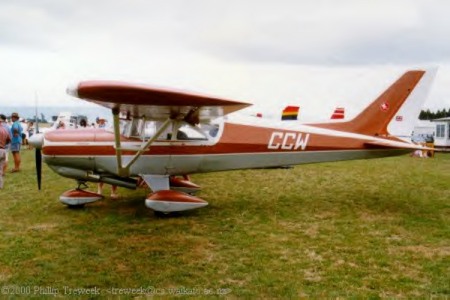|
|
|

Beagle A.109 Airedale

history
As
part of the post-war redefinition of the British
aircraft industry, Auster and Miles merged along
with the Pressed Steel Co. in 1960 forming the
Beagle Aircraft Company. Continuing the tradtion
of the light aircraft previously produced by
Auster, the Airedale was built at Rearsby
utilising some of the earlier Auster jigs and
tooling. Construction utilised welded steel tube
covered by light alloy for the fuselage with
fibreglass forward and fabric aft. The wings were
metal spared with a metal leading edge, fibreglass
tips, and fabric covering. The protype was first
flown on April 16, 1961. This was followed by
eight pre-production aircraft. The first
production version flew on February 24, 1962. In
1963 the A.111 Airedale was introduced which had
been reworked to allow a 55kg (120lb) wieght
reduction. Further development included
modification for a 175hp Continental GO-300 in
place of the 180hp Lycoming O-360-A1A which first
flew on August 18, 1961. This was intended for
Rolls Royce production. Unfortunately sales
suffered as the Airedale was in competition with
the similar sized Cessna 172. Total production was
43 aircraft. About 30 aircraft survive.
specifications
Accommodation
: 4
Dimensions
- Span : 11.1m
(36'4ft)
- Length : 8.0m
(26'4ft)
- Height : 3.0m
(10'0ft)
Weight
- empty : 773kg
(1,700lb)
- max : 1,250kg
(2,750lb)
Power Plant
: 180hp Lycoming O-360-A1A
Performance
:
- max speed :
225km/h (141mph)
- max climb :
650ft/min (198m/min)
- ceiling :
12,000ft (3,657m)
- range : 1,328km
(830miles)
|
|
